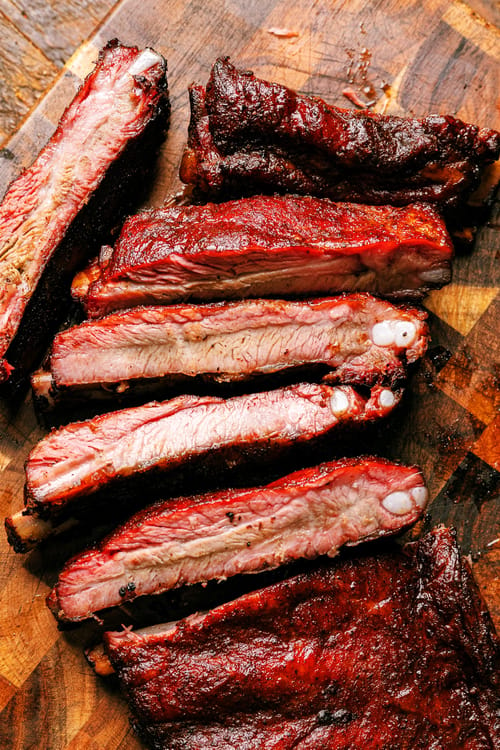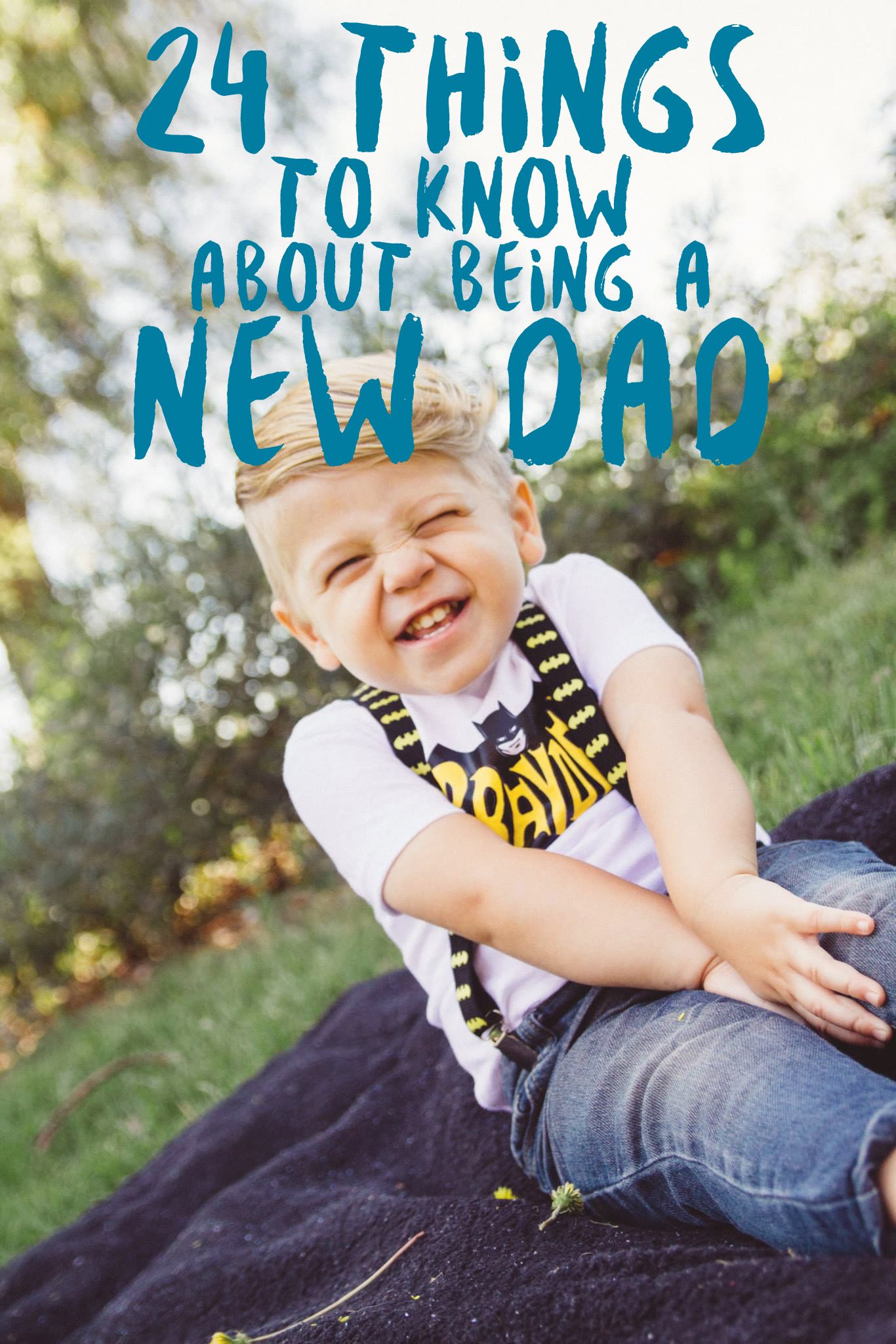DIY Keyhole Garden: A Dad’s Guide to a Garden for Sustainable Family Living
A Keyhole garden is a style of raised bed that has built in composting, and creates a sustainable ecosystem that your plants will thrive in
As a father of a growing family, I can’t help but cringe with every grocery bill that gets racked up these days.
With the rising cost of groceries and economic uncertainty, finding sustainable ways to produce food has become a top priority for me.
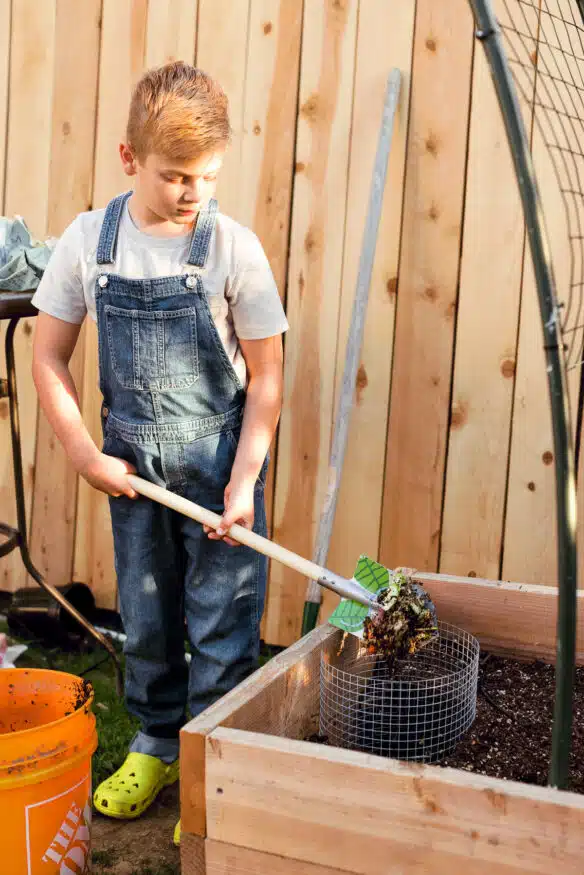
That’s why I turned to building a keyhole garden in my backyard.
Not only does it provide my family with fresh, organic produce, but it also saves us money and reduces our carbon footprint.
In this post, I’ll share my experience with building and maintaining a keyhole garden, as well as tips on how you can get started with your own garden.
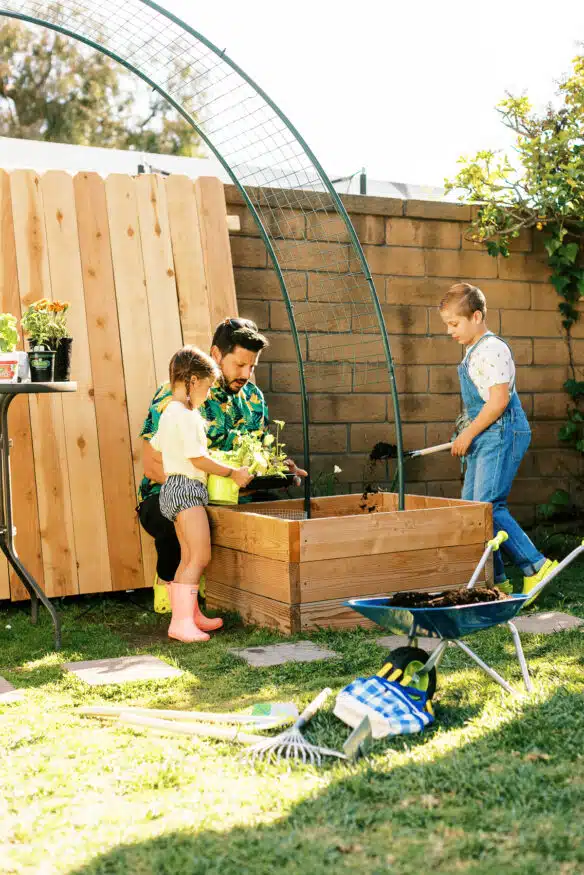
By taking control of our own food production, we can ensure that our families are eating healthy and nutritious food. At the same time, we’re also promoting sustainable living for generations to come!
What is a keyhole garden bed?
If you haven’t heard of a keyhole garden, prepared for an information overload.
A keyhole garden is an awesomely (it’s a word – I swear) and efficient way to grow your own food.
It’s called a keyhole garden because the circular bed has a notch cut out of one side that allows you to access the compost basket easily.
It’s a circular garden bed (or a square, its up to you) with a composting basket, usually in the center but can be placed off to the side. The compost basket provides nutrients to the plants.
Why Should You build a keyhole garden bed?
Cost and Space Effective
One of the best things about keyhole gardens is that they’re perfect for small spaces. You can build one in a small area and it can produce a surprising amount of food.
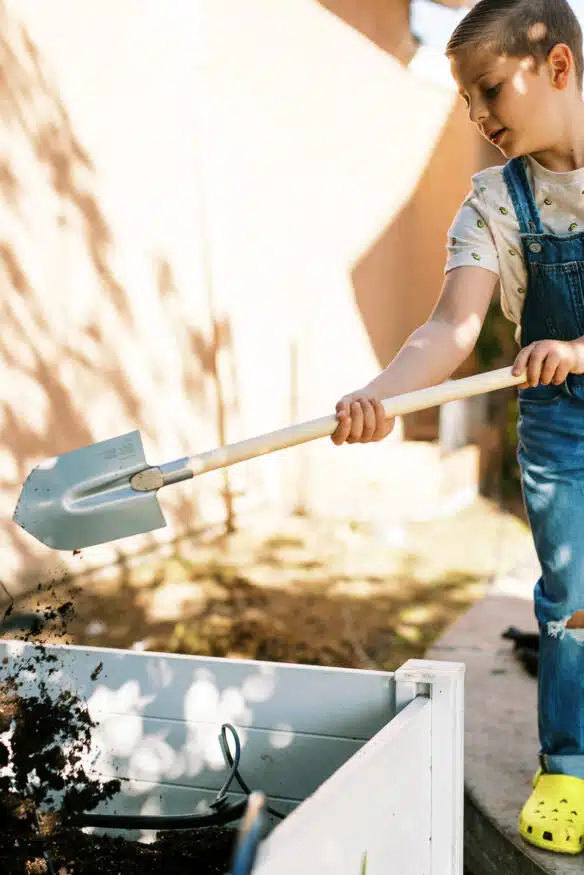
And they’re really easy to and cost effective to build!
You can find kits online, or pick up a few planks of wood, wire mesh, (you can use rocks as well) to build your own!
Sustainability
Another great thing about keyhole gardens is that they’re super sustainable. The composting basket in the center of the garden allows you to recycle food and garden waste into rich compost that you can use to enrich the soil and provide nutrients for the plants.
This means you can reduce waste, save money on buying fertilizer, and create a healthy environment for your plants to grow.
Lower water usage
And if you’re in a drought-laden environment like we are, you’ll want to take advantage of this water friendly garden bed.
The composting basket in the center of the garden doubles as a reservoir for water, which is distributed evenly throughout the garden as it decomposes. This means you don’t have to water your plants as frequently, which saves water and money.
Even if you have limited space and gardening experience, a keyhole garden is the perfect way to get started.
It’s easy maintenance, and something I enjoy getting the kids involved in as they can easily see the effects of re-purposing food scraps.
Can you use worms in a Keyhole garden bed?
I’m always looking for ways to make gardening and composting a fun and educational experience for my kids.
One way to do this is by introducing worms into the composting process in our keyhole garden.
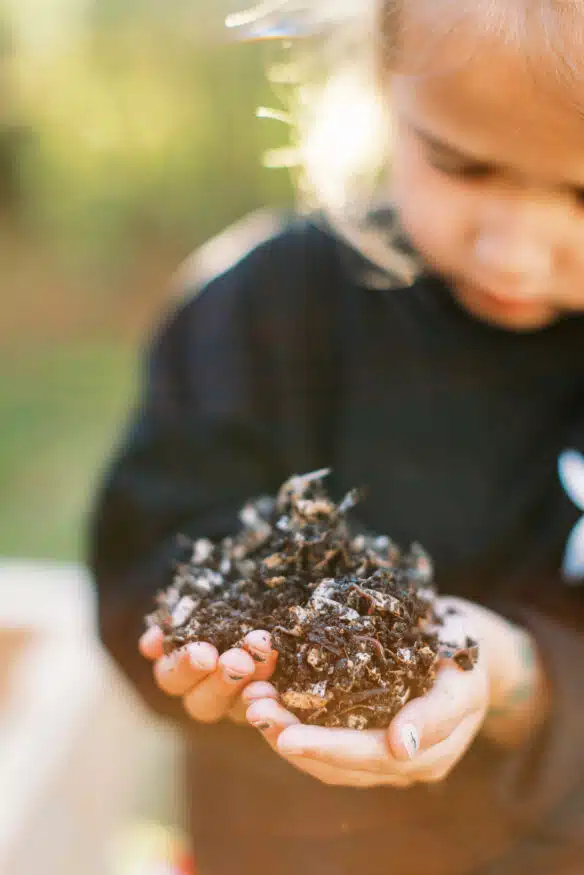
Not only do worms help break down food waste and turn it into nutrient-rich compost, but they also provide an opportunity for kids to learn about the importance of decomposition and the role of worms in soil health.
What I love most about a keyhole garden is that you can add worms directly to the central composting basket in the garden.
Rather than getting a worm bin set up and turning it and moving the fertilizer to a garden, the worms will feed off the food scraps and turn them into nutrient-rich compost right in the garden itself!
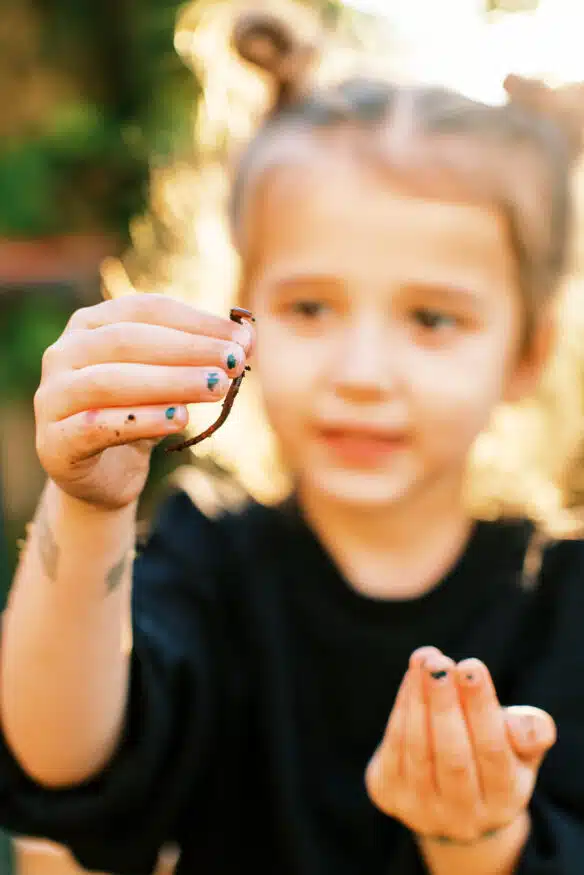
This allows for a closed-loop system where food waste is transformed into fertilizer for the plants.
Adding worms to your keyhole garden can be a great way to promote healthy soil and plant growth. It also reduces waste while promoting sustainability.
The worms help to aerate the soil, break down organic matter, and improve the soil structure, leading to healthier plants and higher yields.
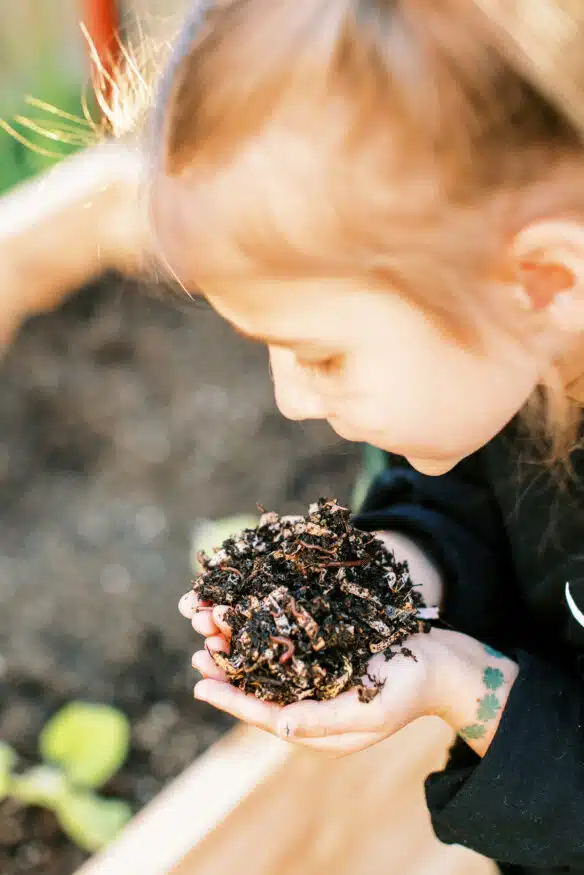
To add worms to your keyhole garden, simply purchase a bag of composting worms (red worms to be specific) from a local gardening store or online retailer.
Then, add the worms directly to the central composting basket in the garden, along with food scraps and other organic matter. Over time, the worms will break down the food scraps and turn them into rich compost that can be used to fertilize your plants.
Construct the composting basket
For an effective keyhole garden, you need a compost basket that your worm can move in an out of. Chicken wire, thatched, or bamboo stakes are excellent materials.
For my build, I went with a chicken wire style wire mesh and cut it down to size. Then, I used my Dremel tool to smooth out any edges to reduce risk of cutting myself or the kids.
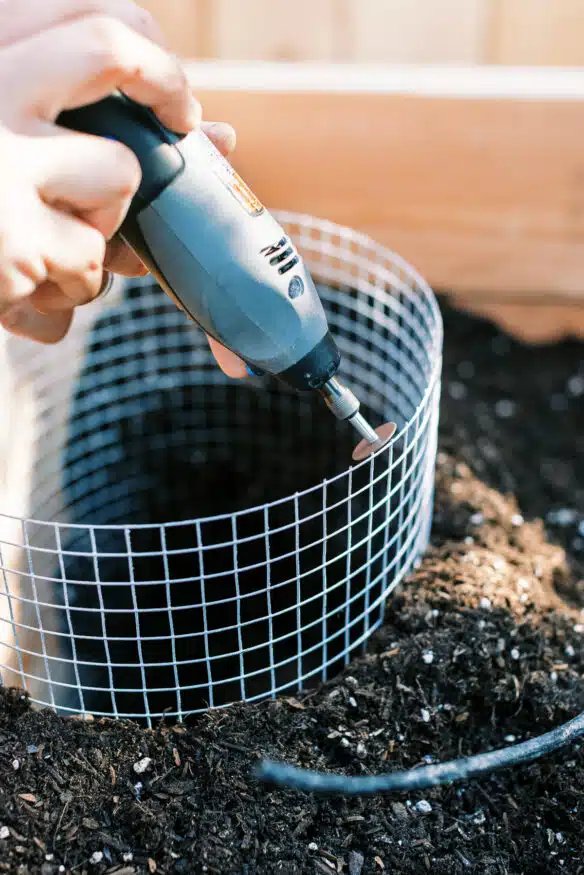
I placed my baskets near the edge for this project. Traditionally, you want it in the center, then you build a “keyhole” as a pathway to access your compost basket.
How deep should a keyhole garden be?
I have my keyhole garden beds in various heights, and they should be treat similar to any raised garden bed.
I’ll go anywhere from 2-3 feet in height depending on what I’m going for aesthetically. I’ve also noticed depending on what your planting, a deeper bed may be more beneficial to allow your plants to grow deeper roots.
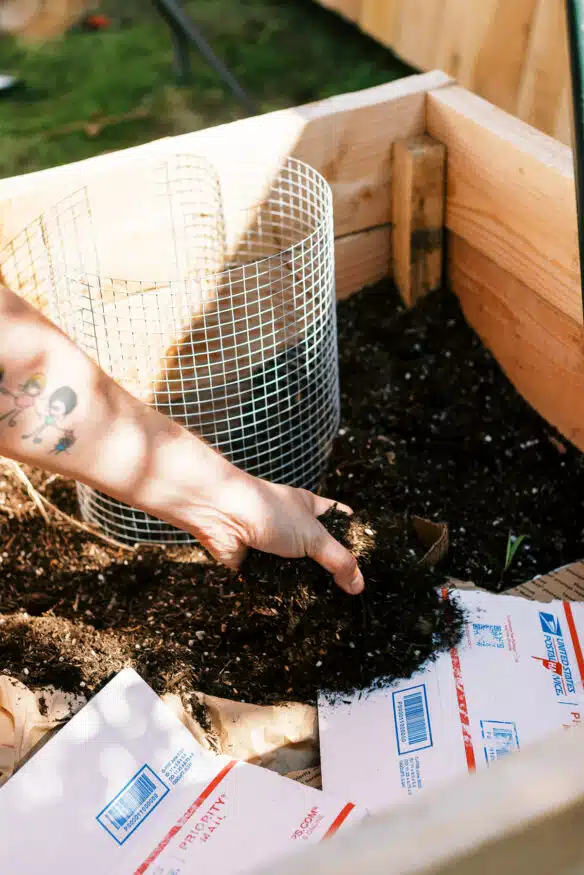
I also add cardboard at the bottom to help with the composting process. You may want to also add a layer of landscape fabric to prevent worms from wandering off.
This also will prevent neighboring roots like trees leeching the nutrients out of your garden bed.
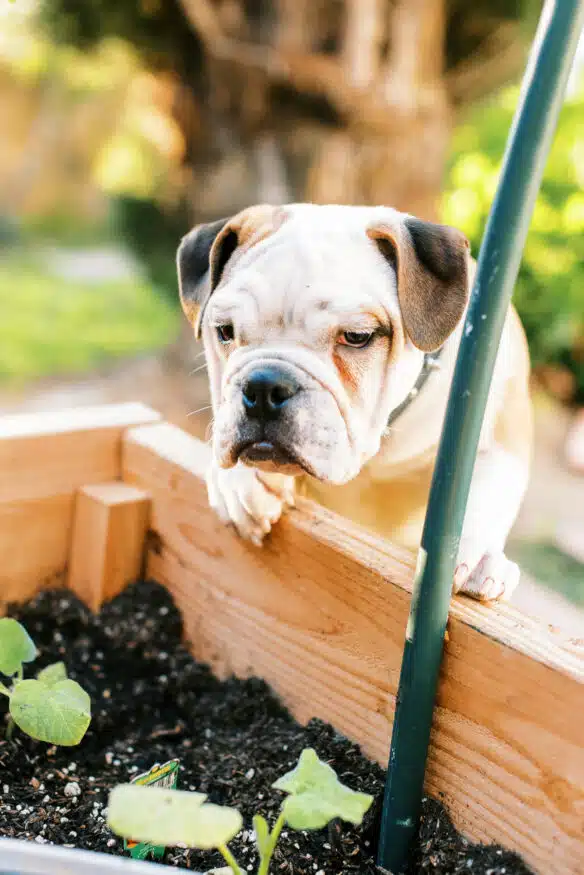
Or if you just need more nutrients in the soil.
Speaking of soil: go with a raised bed style soil. This acts in a similar way as a raised bed, so you’ll need that the soil that will allow drainage.
Getting creative with your Keyhole garden bed (or beds)
This is what I love about gardening, and building garden beds. It’s up to your imagination on how you want your keyhole garden beds to look.
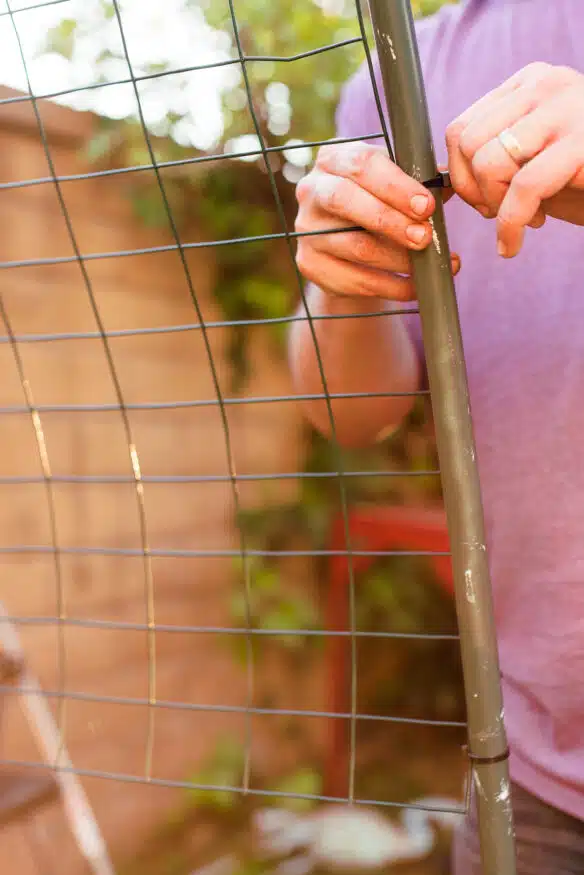
For this build, I decided to build two small key hole gardens. Then, I connected them with PVC pipe and chicken wire that I zip tied to the arch to build a arch.
This is perfect for any vining plants: Pumpkins, Melons, Squash, Cucumber, etc.
Or you can plant a flowered plant that loves to climb to attract bees to your garden. Specifically, Bougainvillea, Star jasmine, honeysuckle, etc.
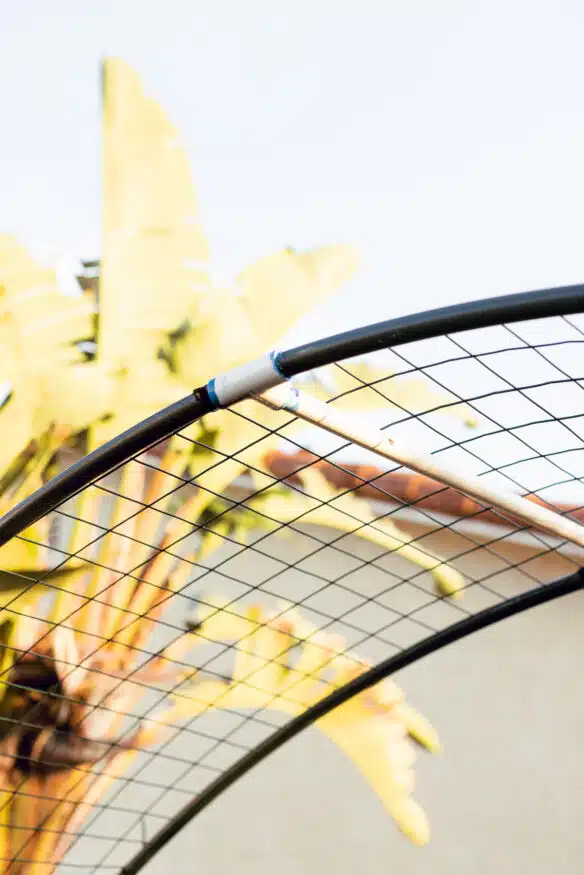
Do Keyhole gardens smell?
Yeah… Yeah they can.
But I’m going to be straight with you. If it smells, you’re doing it wrong.
Lets be real. You’re adding food to a basket and letting worms eat it at their pace, which can lead to food beginning to rot and smell.
So how do you fix that?
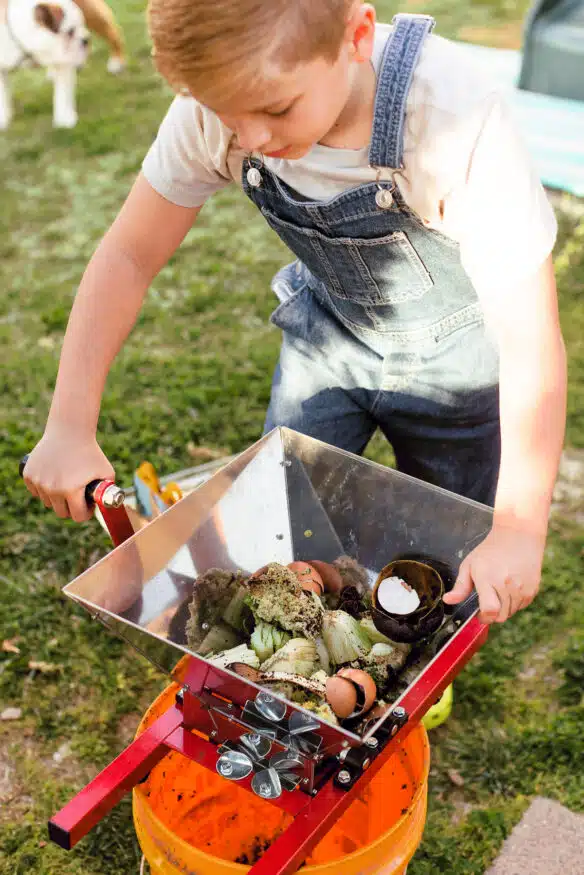
Do not overfill your basket
Make sure that you are feeding your worms at a pace that they can handle. Additionally, make sure your feeding them food waste at a size they can break down quick enough.
I will try to cut up any food waste from prepping ingredients as I go into smaller bits. Not super small, you just doesn’t really want to put whole ingredients in the compost basket.
It will rot and attract vermin, fruit flies and start to smell quicker than the worms can eat them.
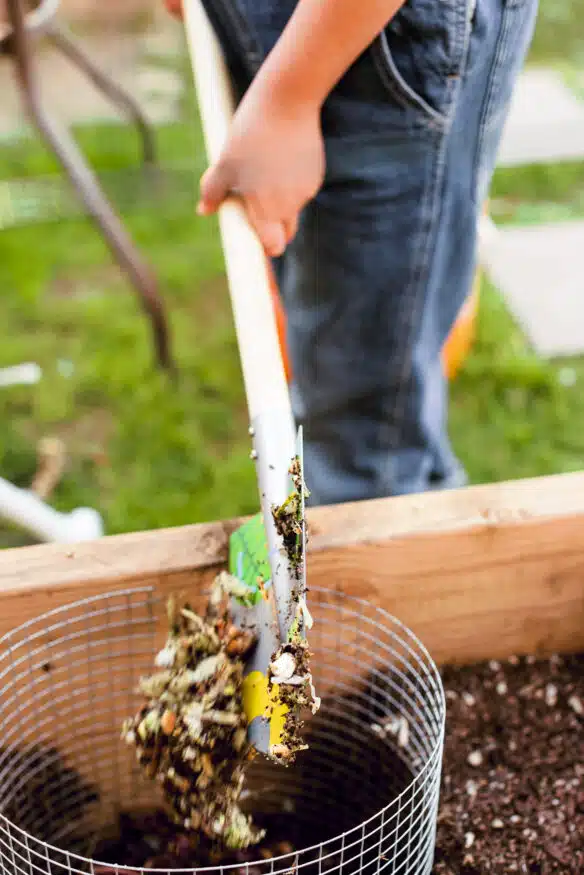
Do not add large food waste items
Sometimes food has just gone past it’s date and needs to get broken down. I use my fruit crusher for making apple juice, and double it to break down any food waste
Oh also – NO MEAT/bones. that is going to make the smell horrendous as it breaks down.
One exception I would suggest is cooked shrimp shells (egg shells too). Don’t have shrimp shells? Then get going on this grilled shrimp recipe!
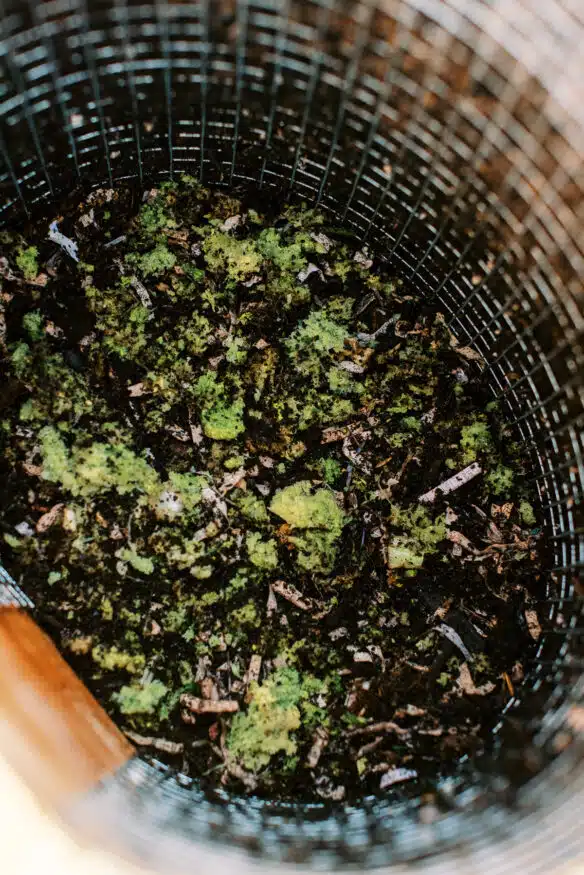
Layer your compost
Another way to help prevent any smells, is to layer your food waste/compost appropriately. Wetter items should go on the bottom, then cover it with drier items like yard clippings.
Or like I mentioned previously, build a lid for your compost baskets to help reduce any smell/pest issues.
What plants are best for keyhole garden?
It depends on how much maintenance you want to do.
Leaf-green plants and smaller root vegetables like carrot, onions, beets, radishes, and turnips are generally planted in a keyhole garden. Herbs, berries and peppers are great too!
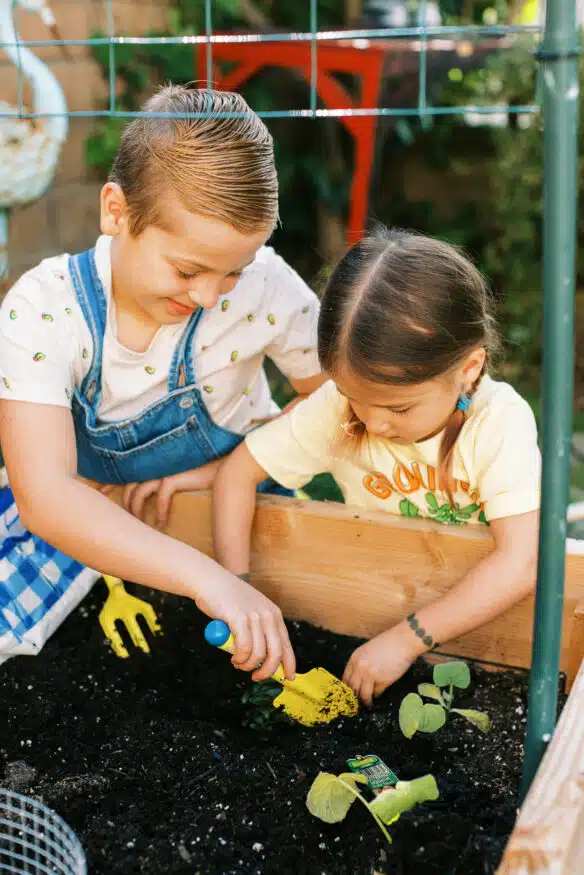
Crops like beans or squash may struggle.
May struggle is the keyword here.
If you plan to go with larger crops, experiment with some sort of trellis solution.
Additionally, you may want to look into a supplemental fertilizer. I found that with larger crops (especially a squash style crop that grows massive leaves), is that it needs the right amount/ratio of nutrients.
So while a keyhole garden bed may not naturally provide the best environment for it to survive, you can plan accordingly.
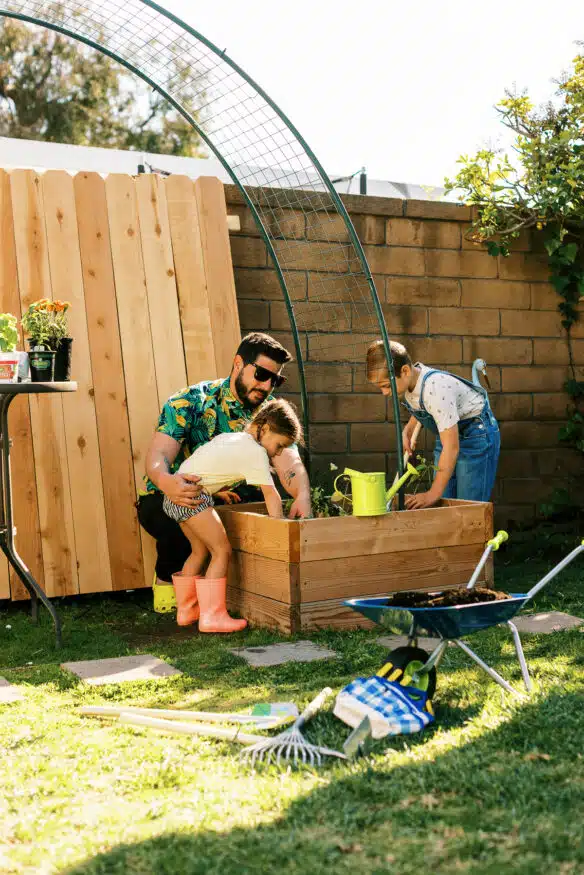
Try a deeper soil bed and supplementing with a 10-10-10 fertilizer. along with pinching off any unwanted growth has given me a successful season of cucumber and pumpkins in a keyhole garden bed.
I hop this post has been helpful and inspires you to start your own keyhole garden.
Whatever you go with you will notice how much your crops will thrive in a keyhole garden bed. It really is amazing!
